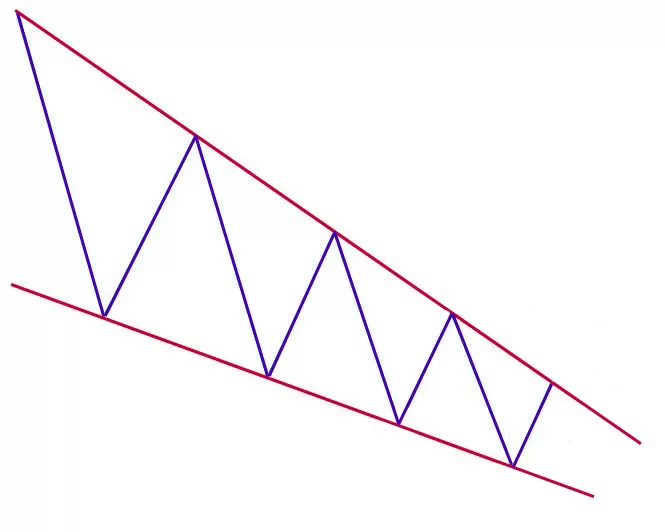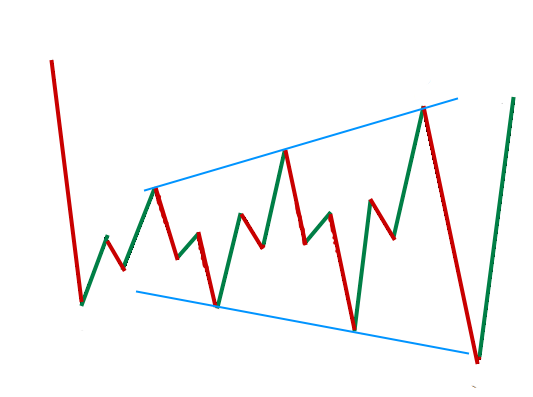The Hanging Man Candlestick Pattern is a fascinating concept in the world of financial trading. This pattern, often seen at the peak of an upward trend in the market, is a single candlestick pattern that suggests a potential reversal in the price direction. In this comprehensive guide, we will explore the intricacies of the Hanging Man candlestick pattern and how it can be effectively utilized in trading strategies.
What is the Hanging Man Candlestick Pattern?
The Hanging Man is a bearish reversal pattern appearing at the culmination of an uptrend. It is characterized by a small real body, a long lower shadow (also known as a wick or tail), and a minimal or non-existent upper shadow. The body of the candlestick can be either red (or black) indicating that the asset closed lower than it opened, or green (or white) suggesting that the asset closed higher than it opened.
Despite the color, what is crucial is the small size of the body relative to the lower shadow, which should ideally be at least twice the height of the body. When viewed on a price chart, the Hanging Man candlestick pattern resembles a figure hanging with a rope around its neck, hence the name.
The Hanging Man pattern is primarily considered a warning sign for traders, hinting at a possible reversal of the uptrend. However, it is crucial to note that this pattern alone does not initiate a sell signal. Instead, it sets the stage for a potential bearish reversal, which is confirmed by subsequent price action.
Recognizing the Hanging Man Pattern
Identifying the Hanging Man pattern involves looking for specific characteristics in the price chart:
- The pattern must occur at the end of an uptrend, indicating that the market has been dominated by bulls (buyers) before its appearance.
- The real body of the candlestick must be small, signaling that the opening and closing prices are quite close.
- The lower shadow should be significantly longer than the body, ideally twice the size. This shadow represents a period during the trading session where sellers were able to drive the price down, but buyers eventually pushed it back up.
- The upper shadow should be tiny or non-existent, indicating that the high price for the period is close to the opening and closing prices.
The presence of these characteristics in a single candlestick at the end of an uptrend signals a Hanging Man pattern.
The Psychology Behind the Hanging Man Pattern
Understanding the psychology behind the Hanging Man pattern can provide valuable insights into market dynamics. Essentially, the pattern reflects an ongoing battle between bulls and bears (sellers).
During an uptrend, the bulls are in control, driving the prices higher. However, when a Hanging Man forms, it indicates that the bears have started to step in. The long lower shadow represents a period of aggressive selling during the trading session. Still, the bulls managed to push the prices back up, closing the session near the high.
Even though the bulls have managed to retain control, the emergence of the bears is a warning sign. It suggests that the bullish momentum may be weakening, potentially setting the stage for a bearish reversal.
Trading with the Hanging Man Pattern
While the Hanging Man pattern is a powerful tool for anticipating potential market reversals, it should not be used in isolation. Instead, it should be incorporated into a comprehensive trading strategy, complementing other forms of analysis like trend analysis or technical indicators.
Here are some key points to consider when trading with the Hanging Man pattern:
- Confirmation is Key: The Hanging Man pattern is just a warning sign and requires confirmation before acting upon it. This confirmation typically comes in the form of a price decline in the subsequent trading session. If the price does not drop but instead closes above the high price of the Hanging Man, it indicates the continuance of the uptrend.
- Volume Matters: The reliability of the Hanging Man pattern often increases with trading volume. A strong selling pressure during the formation of the pattern, reflected in increased trading volume, enhances the probability of a successful reversal.
- Stop-Loss Orders: It’s crucial to manage risk when trading with the Hanging Man pattern. One common approach is to place a stop-loss order above the high of the Hanging Man candle. If the price rises instead of falling, the stop-loss order will limit the potential losses.
- Complementary Analysis: The Hanging Man pattern should be used alongside other forms of analysis. For instance, other candlestick patterns, trend analysis, or technical indicators can provide additional insights into market trends and help validate the signals from the Hanging Man pattern.
Hanging Man vs. Hammer Candlestick Pattern
The Hanging Man and Hammer candlestick patterns are identical in appearance, yet they have distinct implications based on their occurrence in different market trends.
A Hanging Man candlestick in an uptrend indicates a possible bearish reversal. On the other hand, a Hammer candlestick appears at the end of a downtrend and signals a potential bullish reversal. In other words, a Hammer is an inverted Hanging Man that suggests an upcoming uptrend after a period of falling prices.
Is the Hanging Man Pattern Bullish or Bearish?
The Hanging Man pattern is a bearish reversal indicator that appears at the end of an upward trend. Despite its occurrence during an uptrend, the pattern itself signals a potential bearish reversal, indicating that the market might shift from a bullish to a bearish trend.
How to Use the Hanging Man Candlestick Pattern to Trade
The Hanging Man pattern can serve as a valuable tool in a trader’s arsenal. Once a trader identifies a Hanging Man at the end of an uptrend, they should look for confirmation in the form of a price drop in the following trading sessions. If confirmed, they might consider exiting long positions or entering short positions, anticipating a bearish reversal.
However, traders should also implement risk management strategies, such as setting a stop-loss order above the high of the Hanging Man candle.
FAQs
What is the Success Rate of the Hanging Man Candlestick?
The success rate of the Hanging Man pattern can vary based on several factors, including the asset being traded, the market conditions, and the confirmation signals. On its own, the pattern is merely a warning sign and not a guarantee of a price reversal. However, when used in combination with other technical analysis tools, the Hanging Man pattern can be a potent indicator of upcoming bearish reversals.
Is the Hanging Man Candle Accurate?
Like any other technical analysis tool, the Hanging Man pattern is not foolproof. It merely suggests a potential bearish reversal and requires confirmation through subsequent price action. Moreover, the pattern’s effectiveness can often be enhanced when used in conjunction with other technical indicators and analysis techniques.
Wrapping Up
The Hanging Man candlestick pattern is a compelling indicator of potential bearish reversals in an uptrend. However, like any other technical analysis tool, it should not be used in isolation. Traders should incorporate the Hanging Man pattern into a broader trading strategy, using it alongside other forms of analysis to make informed trading decisions.
Whether you’re a seasoned trader or a beginner in financial markets, understanding and correctly interpreting the Hanging Man pattern can enhance your trading strategy. In the ever-changing landscape of financial markets, anticipating potential trend reversals can be a significant advantage.






